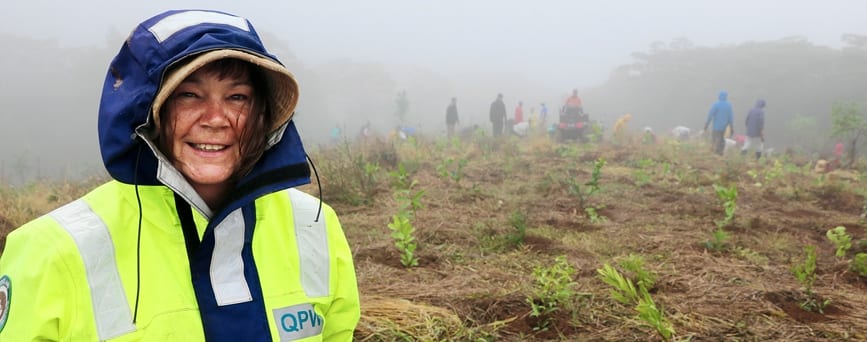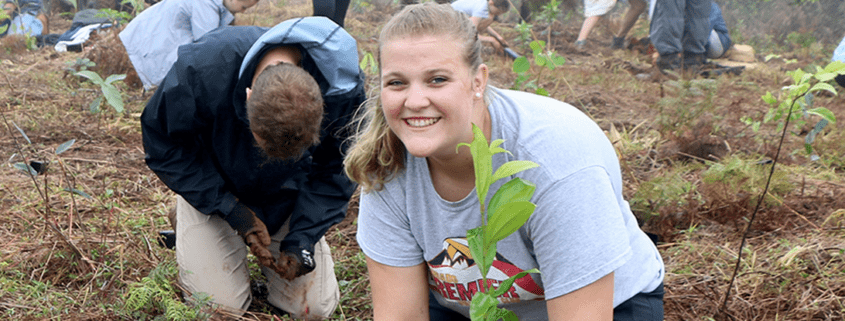Australian Wildlife Corridor Restored to Mitigate Effects of Climate Change
The Misty Mountain Nature Refuge on Australia’s northeastern coast lived up to its name during the protected area’s first-ever community planting day. In late March, over 70 volunteers met on a hazy tropical ridge to begin ecologically restoring a stretch of rainforest from the reserve to the coast. The conservation project’s goal is creating a wide, safe corridor for range-restricted mammals seeking cooler habitat in the wake of climate change.
Recognizing the region as a national priority, Rainforest Trust and Australian partner South Endeavor Trust established the 173.5-acre Misty Mountain Nature Refuge in 2017. The refuge connects not only the mountains to the sea, but also two large expanses of World Heritage rainforest. The vital corridor created by this refuge is essential for animals to move freely. Ultimately, Queensland’s wildlife will have a 3 million-acre mosaic of diverse rainforest habitats to traverse.

Volunteers have already planted 5,000 native species to increase biodiversity as they widen the corridor. Tim Hughes, South Endeavour Trust’s Executive Director, does not have to explain the restoration work’s importance to the volunteers. They are “all very aware of how critical this corridor project is,” he said. “This is a truly committed community trying to repair the environment within which they live so that its unique wildlife can have the best possible chance to survive the challenges of both habitat fragmentation and climate change.”
The volunteers’ main goal is widening the corridor for mammals such as the Lumholtz’s Tree Kangaroo and the Lemuroid Ringtail Possum. The latter species is particularly susceptible to climate change since they can succumb to heat stress. But a secure corridor allows them to seek refuge from increased heat due to climate change. “This improved ridge to reef corridor in the Misty Mountain Nature Refuge is a necessity for these range-restricted mammals as threats from climate change increase,” said Rainforest Trust CEO Paul Salaman.
The project aims to install 17,000 locally-sourced plants over the next two years. Volunteers are using 95 different species, some of which will grow into food sources for the Vulnerable Southern Cassowary. The refuge is also home to a northern subspecies of the Near Threatened Spotted-tailed Quoll, the largest remaining native carnivore in the region. The quoll will benefit from restoration as well, since its prey will thrive from an increase in vegetative diversity and abundance.





